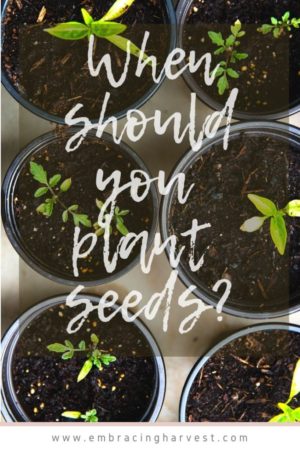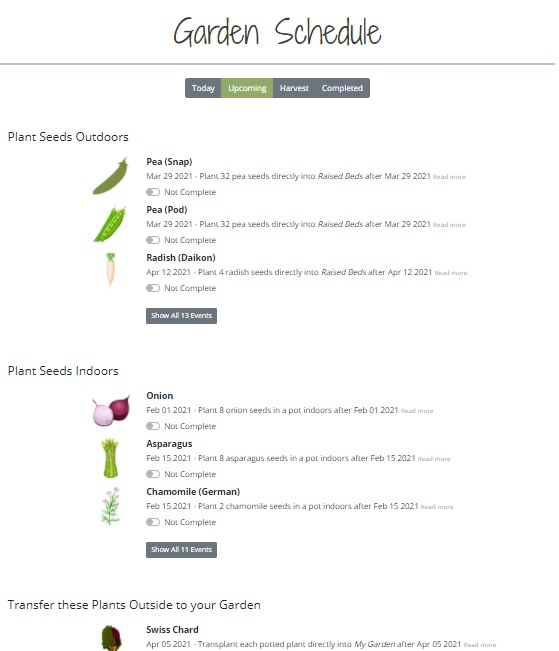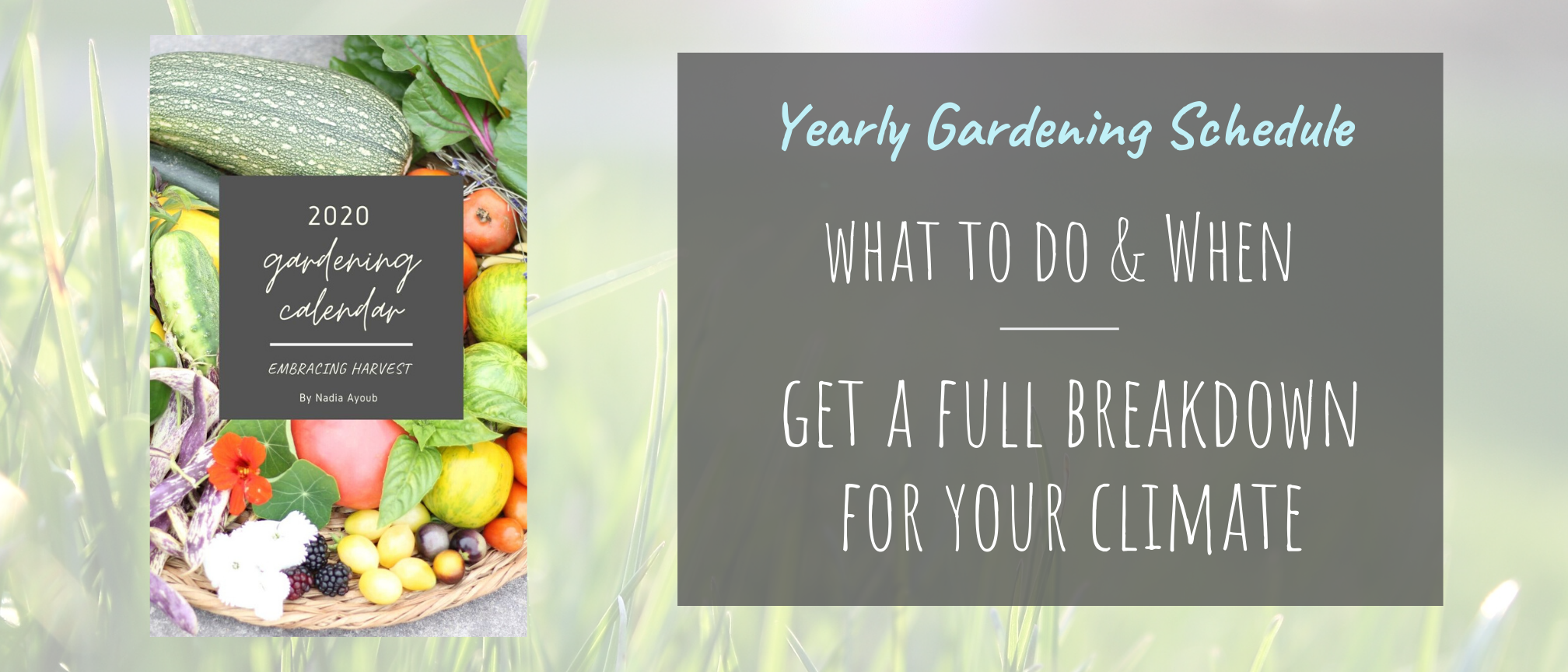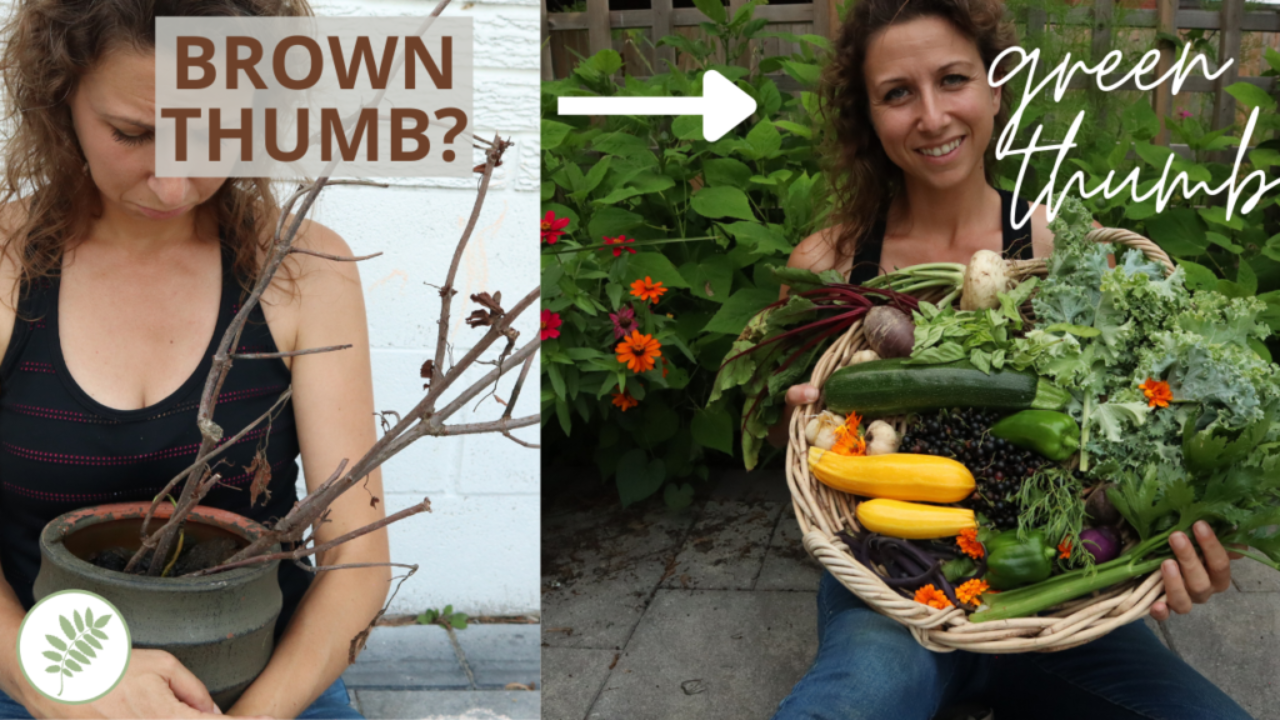When to Plant in Spring? Your Personalized Planting Schedule
When is the best time to plant vegetables? That depends on where you live and what plants you’re growing. Keep reading to learn how to create your own personalized planting schedule for your climate.
If you’re planting all of your vegetables, herbs, flowers and fruits on one random day in Spring, you’re missing out on a huge opportunity to get more from your garden.
If you’re planting too early, you could risk killing your plants. If you plant too late, you could miss out on the ideal growing period and not get the harvest you were expecting, or get it later than you could have.
Each plant has an ideal planting period, and when you learn to match the plant’s ideal planting period with your unique climate, it can be a game changer. You can be eating out of your garden earlier than you thought possible, but at the same time, minimize the risk of killing your plants.
Watch below to learn how to create your own planting schedule or scroll down to keep reading
Time Stamps:
- 0:10 Why create a planting schedule
- 2:10 Last Frost Date
- 2:56 When to plant seeds
- 10:20 Benefits of Garden Planning
- 11:44 When to plant a transplant

If you enjoyed this and might want to come back to it later, pin it to your Pinterest Gardening or Garden Planning board.
When is the Best Time to Plant?
The best time to plant is determined by the plant’s ideal growing conditions and your own climate. You can either use a Garden Planner to create your own planting schedule, or create your own, which I’ll walk through below.
The first thing you need to do is find out when your last frost date (LFD) is where you live. This date tells you when it stops freezing where you live in the spring. Google “[your city] last frost date” and you should be able to find it. This is an average over the last 30 years or so.
Write that date down on a piece of paper so you have it handy as you’re creating your planting schedule.
When to Plant Each Vegetable
Next, you’ll need to look at the list of vegetables (or herbs or flowers…) that you want to grow. If you’re growing from seed, the seed packet will tell you the number of weeks before or after your last frost date that you should be planting.
On that same piece of paper, write down the name of the plant you want to grow, and the suggested time frame written on the seed packet. Now look at a calendar and find the ideal date. For example, if your last frost date is April 26, and the seed packet suggests you plant tomato seeds 6 weeks before your last frost date, your ideal planting date for starting tomato seeds indoors is March 15th.
Then look at when the seed packet suggests you should transplant that tomato plant outdoors. For example, if they say to transplant it after it stops freezing in spring, you would write a date down after your last frost date, such as April 30th.
Continue this process for all the plants you want to grow from seed. The method is the same whether you want to start seeds indoors or whether you will be growing from seed outdoors directly in your garden. However the dates will be quite different for each option.
By creating a planting schedule for yourself, you’ll be giving your plants the best chance of producing an amazing harvest for you and your family. You can create the schedule yourself as described above, or use our Garden Planner and have the schedule created automatically based on your garden design.


What should you be doing each month in the garden? Download this free gardening calendar!




